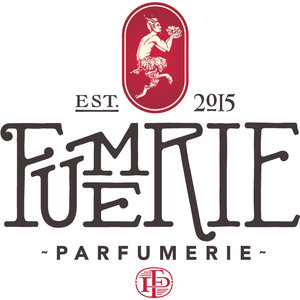Ernest Beaux
Ernest Beaux (French pronunciation: [ɛʁnɛst bo]; 7 December [O.S. 25 November] 1881[1] – 9 June 1961) was a Russian-born French perfumer who is best known for creating Chanel No. 5, which is perhaps the world's most famous perfume.
In 1912 Russia celebrated the centennial of the Battle of Borodino, the turning point in Napoleon's Russian ambitions. For this celebration Ernest Beaux created the fragrance "Bouquet de Napoleon," a floral Eau de Cologne, for Rallet. It proved to be a major commercial success.
The following year, 1913, marked the tercentenary of the founding of the Romanov dynasty. To follow up on his "Bouquet de Napoleon" success, Ernest Beaux created a now-lost fragrance, the "Bouquet de Catherine", honoring Catherine the Great. This fragrance is not to be confused with a fragrance from Brocard[permanent dead link], Rallet's chief competitor in Russia called "The Empress's Favorite Bouquet", which later evolved into the Soviet version, "Red Moscow."
Bouquet de Catherine was not a marketing success, perhaps due to Catherine the Great's German heritage at a time of rising tensions between Russia and Germany which would lead, in 1914, to World War I. While born and raised in Russia, Ernest Beaux's French heritage brought him into the French army. While it was generally expected that this war would last no more than a few months, he was not released from military service until 1919, having by this time seen service in the infantry fighting against Germany and then as an intelligence officer and interrogator at an Allied prison camp at the Kola Peninsula at the Murmansk Oblast during the Russian Civil War.
While serving in the French military, Ernest Beaux's perfumer colleagues at Rallet fled during Russia's October Revolution to La Bocca, France, to continue working with Chiris. In 1918 he was working as a counter-intelligence officer on the British-French concentration camp of Mudyug island, interrogating Bolsheviks captured by the White Russian and Allied armies. In 1919 Ernest Beaux, released now from the army, settled in Paris but continued to have a relationship with the former Rallet employees at La Boca.
Around 1920 Joseph Robert was the chief perfumer at Chiris. With little prospect of being promoted under him, Ernest Beaux tried to use his contacts to the emigrated Russian nobility to get new projects. In 1920, with the help of the Grand Duke Dmitri Pavlovich of Russia (1891–1941), a companion of Coco Chanel (1883–1971), he arranged a meeting in Cannes late in the summer of 1920, where he presented his current and former works to Mlle. Chanel. Chanel chose the "No. 5" as a Christmas present for her best clients. When Ernest Beaux asked her how she wanted to name that scent, she replied: "I always launch my collection on the 5th day of the 5th months, so the number 5 seems to bring me luck – therefore, I will name it 'Nº 5'".
Initially only 100 flacons of Chanel Nº 5 were produced, which she gave away on Christmas 1921 for free to her best clients. However, soon the demand was such that she decided to launch the perfume officially for sale in her shops in 1922. That year she also launched a second fragrance from the two numbered series of bottles that Beaux had presented her, which were numbered one through five, and twenty through twenty-four: Chanel Nº 22, the bottle no. 22 from the second series. However, since this didn't do as well as Nº 5, it was withdrawn and only relaunched in 1926.
Ernest Beaux left Chiris in 1922 to head a sales agency for his friend Eugene Charabot in Paris. However, Chanel Nº 5 did so well that Bader and Wertheimer, owners of Galeries Lafayette, bought the rights to it from Coco Chanel on April 4, 1924, and founded Les Parfums Chanel, for which they hired Ernest Beaux as chief perfumer. In his new function Ernest Beaux created many famous perfumes until he retired in 1954.
Since Coco Chanel's breakthrough as couturier only took place in 1925 with her design of the little black dress, she felt taken advantage of by Wertheimer, and, after an attempt in World War II to use Nazi influence to seize control of the company from Jewish Wertheimer, fought against her own perfumes in creating competitive fragrances under her own name, for instance "Mademoiselle Chanel Nº 1" (1946), sold exclusively in her own shops. In France this was prohibited by judicial action for counterfeiting, but Saks Fifth Avenue in New York and Neiman Marcus in Texas kept distributing, and, when customers reacted with puzzlement, Wertheimer gave in and raised Coco Chanel's share in the company. In 1947, Wertheimer and Chanel made peace, and when Chanel wanted to resurrect her couture house, he even backed her financially. Although she made a fortune on the perfume, throughout her lifetime she was convinced that the deal had been heavily weighted in favor of the perfumer and that she had been cheated out of a huge sum of money.
"The future of perfumery is in the hands of chemists... We'll have to rely on the chemists to find new chemicals if we are to make new and original accords." - Ernest Beaux
*fragrances listed for reference only, not sold at Fumerie
BOUQUET DE NAPOLEON Rallet
CHANEL NO 5 Chanel
CHANEL NO 22 CHANEL
image and bio via wikpedia

